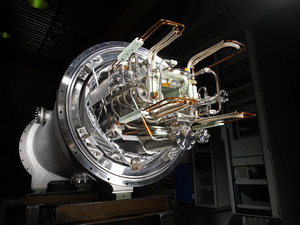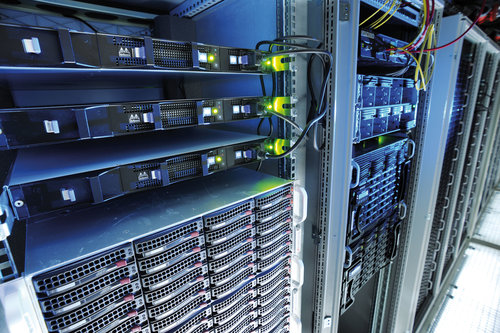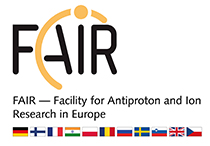High tech for FAIR

Cutting-edge technologies and extremely innovative measuring methods and techniques are being developed for the unique FAIR particle accelerator facility. In order to create the acceleration and experimental facilities, high-level scientists, engineers, and other experts are working in international partnership to advance new technological developments in many areas such as information and superconductor technology.
Superconducting magnets and an ultra-high vacuum
The SIS100 ring accelerator and many experiments need superconducting magnets in order to guide the extremely fast-moving particles. The magnetic fields must be very strong and capable of being rapidly changed while maintaining extremely high field precision. In addition, an ultra-high vacuum (1015 times less than atmospheric pressure) must prevail in large parts of the facility so that the highest possible particle intensities can be generated. Special technologies such as specially coated cryo-collimators are being developed for this purpose.
Cryogenics
An ultra-high vacuum and superconductivity can be created only with the help of cryogenics. The components are cooled off to temperatures as low as -269°C by means of liquid helium.
Control systems
With the help of the new joint control systemfor the existing GSI and the future FAIR accelerators ten thousands of components will be controlled. A procession of commands within nanoseconds enables the efficient operation of the accelerator facility and the optimal performance of the experiments. To maximize the experimental time several research programs can be conducted in parallel. The efficient parallel operation even makes it possible to use different types of ions.
Big data

A high-performance computer centre, Green IT Cube, has been built to efficiently store and evaluate the huge amounts of data that will be generated by the experiments at FAIR. With its 300,000 processor cores, the centre achieves a processing performance of 5.27 billion computer operations per second. The data will be stored in the system’s 100 petabytes of memory. Thanks to a special cooling system, the Green IT Cube is extremely energy- and cost-efficient. The compact 3D construction method saves space and provides fast signal paths. The data transmission rate will be 1 TB/s. Apart from data analysis it is planned to simulate FAIR experiments at the Green IT Cube.
Materials development
For several areas of the FAIR accelerator facility new materials have to be developed. For example, materials for accelerator components, detectors and read-out electronics are needed which are suitable for higher particle intensities. Partly these materials are developed at GSI and FAIR.


